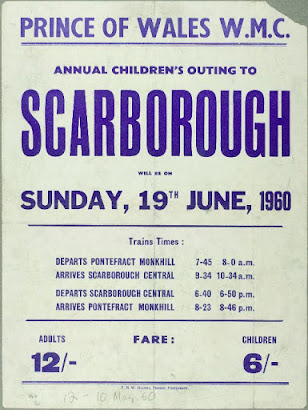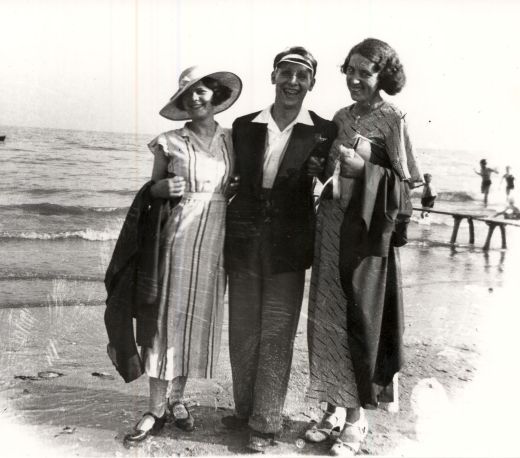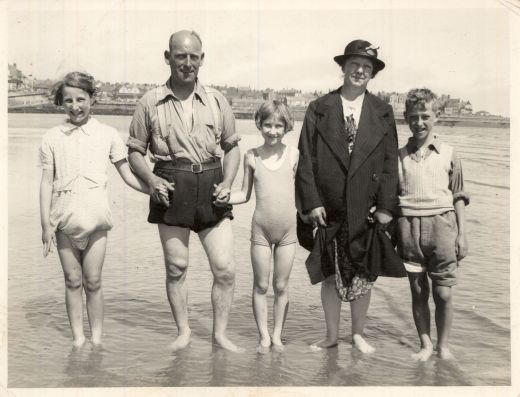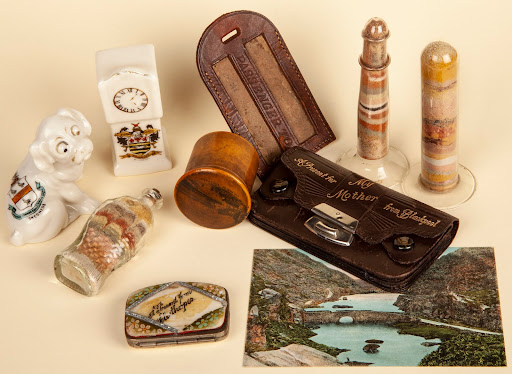If you're hoping for some sunshine and planning on heading to the coast this bank holiday weekend, you're following in the footsteps of a long line of Brits. By the mid 20th century, more day trippers and holiday makers than ever before were flocking to Britain's beaches. The provision of public holidays and paid annual leave meant more people could treat themselves to a break.
We've been looking through our collections for some inspiration for a bank holiday adventure.
Where to go
First things first, deciding where you want to visit! During the heyday of the great British seaside holiday in the mid 20th century, most people travelled by public transport. Employers and community groups often organised special excursions, whilst rail companies offered summer timetables with extra services to ferry workers to the coast. Tourist boards at seaside resorts often worked with the rail companies, running joint publicity campaigns to tempt travellers onto trains to the beach. They produced travel guides with information on train times, attractions and accommodation.
 |
| Resorts and hotels on the Yorkshire coast feature in this brochure by British Rail. |
 |
| Holmes Printers produced this poster advertising a train trip to the seaside from Pontefract. |
 |
| Local amateur photographer, Jack Hulme captured this shot of buses taking Fryston miners' families to the beach. |
The travel poster was the rail companies' primary marketing tool. They appointed top artists to produce eye-catching designs that showed off the seaside in all its splendour as a fun family day out. Their works are now considered iconic. Pontefract-born Charles Pears was one of the famous artists commissioned to paint packed piers and bustling beaches.
 | ||
| 1934 poster design by Charles Pears © TfL from the London Transport Museum collection, http://www.ltmuseum.co.uk |
You can see more poster designs by Charles Pears in our Art UK Curation - we celebrate his career by bringing together some of our favourite works from collections across the UK.In honour of Pontefract's famous son, we commissioned graphic designer, Georgina Westley, to produce a modern travel poster for the town inspired by Charles Pears. See the poster and read about the design process in Georgina's recent guest blog post, Drawing Pontefract.
What to pack
So you've picked your preferred resort and booked your train tickets. It's time to pack those holiday essentials. You'll need your beachwear - perhaps inspired by the fashionable bathing belles adorning Pears' posters. By the 1950s, beach censors no longer policed the length of bathing suits. The modesty protecting skirts and long sleeves of the previous century had been replaced by halter fastenings, sweetheart necklines, dropped waists and figure flattering ruching.
 |
| Swim and beach wear, 1950s-1970s |
Once you've selected your attire, don't forget your bucket and spade- and you'll want your camera for snapshots of your sandcastles!
 |
| Rubber seaside buckets, 1980s |
 |
| Brownie 127 camera, Kodak, 1950s |
On the beach
Hopefully you can claim yourself a prime spot on the sand to lay out the picnic blanket and set up camp for the day, like the Gill family at Bridlington in the 1930s.
Or perhaps you'd prefer to sunbathe on a deckchair like these 1950s holiday makers.
Later on, you might go for a walk along the seashore...
Before you leave
Make sure you take home a reminder of your trip with a souvenir or two from the seaside gift shops.
Bagley's made similar souvenirs for several resorts, including this nautical novelty for Great Yarmouth. The floral design was hand painted. Why not have a go yourself with our latest Colour our Collections sheet?
 |
| Click here to download your colouring sheet |
Let us know if you're going in search of the sea air over the long weekend. We'd love to know what you get up to- especially if you're inspired by any of our collections!
Or if you're staying at home this bank holiday, why not pass the time with our digital jigsaw and enjoy Georgina's beautiful poster design.











No comments:
Post a Comment
We would love your comments - though they may take a day or two to appear.